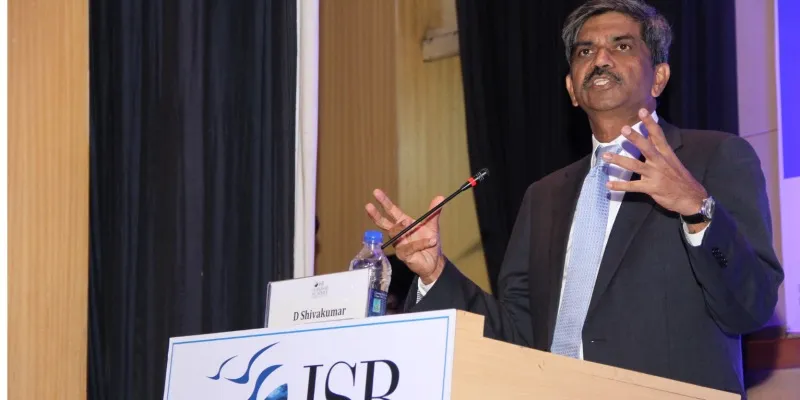The story of India, then, now and in 2020 - D Shivakumar CEO, PepsiCo, India
According to D. Shivakumar, CEO, PepsiCo India's talk on 'The India Story', at ISB Hyderabad Leadership Summit, one of the most significant trends that will emerge by 2020 and make India a strong global force is the emergence of a stronger and more powerful middle class.
For various reasons India has been in news, said Shivakumar. India, he adds, has always been a big consumer market, for any product or service across the globe. He predicts that in the next five years, with the emergence of a stronger middle class, this will only become more the norm. He explained his case by presenting a timeline mapping how India, and its position as a global entity, had changed over the years.

Going back in time
Shivakumar said that more than a century ago, our nation’s GDP was calculated by the number of people we had, as technology, innovation, and valuation were not influencers. So it was no surprise India and China were great economies. However, taking a route down memory lane he said that over the past 300 years, the wealth position of the world at large has changed drastically.
1700s - The per capita GDP average of the bottom five countries was at 424. The per capita GDP average of the top five countries was at 1333.
1800s- The bottom five went of 325, and the top average increased 1479. The gain between 1700s to 1800s was at a ratio of four.
1900s – The per capita GDP of the poorest countries was 639, and the richest were at 4145. This shows a ratio of seven.
2020 - Factoring in the impact of mobile technology the bottom five countries will be at 3380 and top will be 54,400. With the impact of science and technology we see a growth of ratio of close to 60.
Share of world GDP
Shivakumar also believes that the distribution of wealth will witness a shift over the next few decades with significant changes being seen in China and India:
1800s - China accounted for 29 per cent of the world GDP, ranking number one, while India accounted for 16 per cent and ranked at number two. The US, which accounted for 1.8 per cent, ranked at number nine.
2025 - China will contribute to 17 per cent, India will contribute close to 5% and US be number one.
2050- China will account for 27 per cent of the world’s GDP, India will account for 17% of the world’s GDP and the US will account for 21%, meaning these three countries will account for 65 per cent of the world’s GDP.
India isn't one but many slices
2010 – Close to four million households were earning more than $37,000 per annum.
2015 - This is likely to increase to six million households.
2020 - More than 11 million households will be earning the above income per annum.
"This means in a matter of one decade you see right at the top a factor of three. This indicates that These households will be truly global citizens. They will expect the best in design, technology and performance. Close to 11 million people, which is twice the population of Finland at the per capita of $37,000 i," said Shivakumar.
However, India's focus has always been towards people below rage poverty line. If you look at that strata:
2010- There were close to 120 million households.
2015 - There are close to a 105 million households, making it the largest segment even today
2020 - The segment will decline to 80 million.
The great middle class
The middle class segment is likely to become the largest segment at 109 million households. This means that we need to start thinking differently, not only in terms of goods and services, but also in terms of programmes and policies.
"What has been the mainstream of policies for uplifting people from below the poverty line will no longer hold true. The people of the 109 million households will expect a very different kind of policy making," says Shivakumar.
The middle class in India has always favoured education, the time-tested and proven way to improve one’s lot in life. This means that, by 2020, there needs to be a better focus on educational institutions, and job creating degrees. “Subsidies will no longer be the answer,” says Shivakumar.
A nation of contradictions
The average age of the population in the country is 29, while in China and the US it will be 37. However, we cannot ignore the fact that we have more than 65 million people over the age group of 60, and there aren't sufficient facilities for them. While we are a young nation, we are also an old nation.
"Many say that there are over 100 people in the top Fortune 500 list. This definitely makes India a rich country. However, 41 percent of the Indians live on less than one dollar a day. And close to 83 percent live on less than $2 in a day," says Shivakumar.
Also, while we have some of the fastest-growing cities in the world, not one can be ranked amongst the top 30 in the world in terms of quality of life. So with every positive, there is a contradiction that comes into play.
The biggest change factor in India
Whether India is growing or has a long way to go, Shivakumar says that close to 600 million people will be on the Internet by 2020. This means that by 2020 there will be significant change in consumer behaviour. Indians will shop, learn and entertain themselves a lot more through the Internet in the next five years.
Shivakumar adds that e-commerce today is roughly a $16 billion market; by 2020, this number will be close to $80-100 billion. "The FMCG industry is currently a $40 billion market; by 2020, it will be worth $65 billion.”
“This means in a matter of five years, e-commerce will be bigger than a 100-year-old FMCG industry," adds Shivakumar. The Internet also transform the way people bank, and the way governances are handled.
Creation of 100 smart cities
Currently, we add close to 1000 towns/cities every year. This means villages are getting reclassified every year. Today, we have close to 8,000 towns. Shivakumar adds that smart cities will create opportunities for technical entrepreneurs.
Growing startups and entrepreneurs
The growth in entrepreneurship and the advent of startups is an inevitable trend. With the Internet reaching a large audience base, there will be more innovative technologies and startups. "It's no surprise that the PM has been focussed on entrepreneurship," adds Shivakumar.
If you look at the Indian stock exchange today, there are close to 5,900 listed companies. Wallstreet, Shivakumar adds, has 5,500. However, of the 5,900 listed companies, 66 per cent are family-owned. In Asia-Pacific, 50 per cent of all companies are family-owned. But with the increase in technology, opportunities for startups will increase. Here’s a timeline according to Shivakumar on how things will evolve for the startup industry globally.
2000 – The US had 818 companies above the million dollar mark, India had 19 and China had 51 companies.
2010 – The US had close to 185 companies, China had close to 465 companies, and India had close to 141 above the million dollar mark.
– The US will have 1,842 companies above the million dollar mark, while China will have 1,205 and India will be close to 450 companies.
In conclusion, Shivakumar said that India has not only be in the news for a long time to come, but will also play a part in the economic development of the world. This will especially be true in the next five years.







